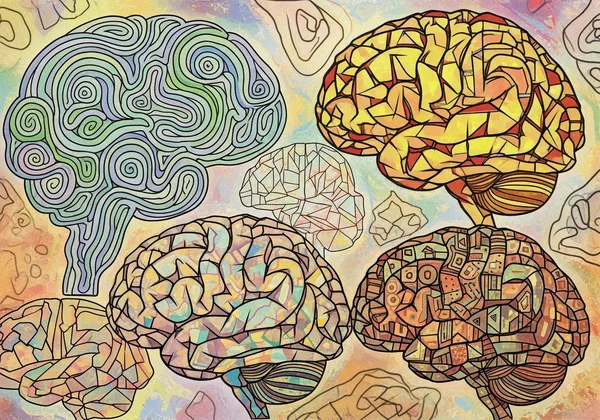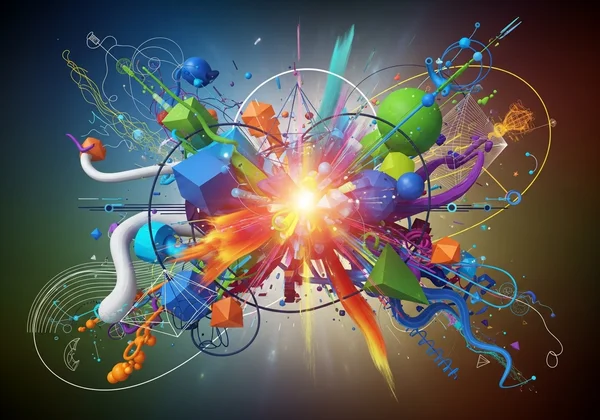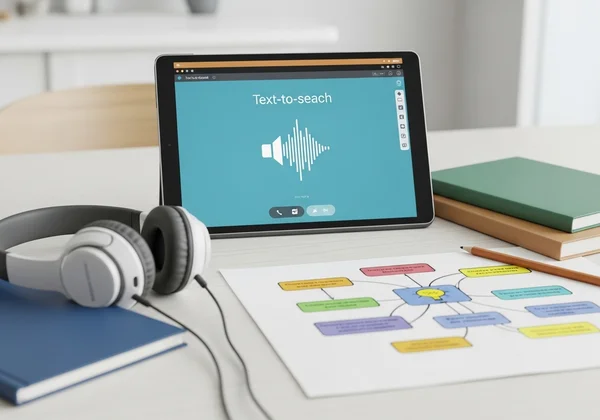免费神经多样性测试 & 读写障碍特征:迹象、优势与支持
您或您所爱的人是否曾经在阅读或处理信息时遇到困难,感觉自己的大脑运作方式截然不同?如果是这样,您并不孤单。本文将深入探讨读写障碍,揭示它并非一种障碍,而是一种独特的神经类型。它是一系列认知特征,远远超出阅读挑战,并且常常包含令人难以置信的优势。了解读写障碍的神经多样性特征可以成为赋权的第一步。 什么是神经多样性的迹象? 对许多人来说,这段旅程始于这个简单的问题。通过了解读写障碍,您可以增强自己的能力,拥抱一种不同但同样有效思维方式。您的自我发现之旅,探索您独特的个性,可以从今天开始。
什么是读写障碍?从神经多样性的视角
长期以来,读写障碍一直被误解并狭隘地定义为阅读障碍。然而,从神经多样性的视角来看,它被视为大脑连接方式的自然变异。它主要影响大脑处理语言的方式,这可能导致阅读、拼写和写作方面的挑战。重要的是要理解,读写障碍与智力无关。历史上许多最杰出的思想家,从阿尔伯特·爱因斯坦到列奥纳多·达·芬奇,都被认为患有读写障碍。
通过神经多样性的视角看待读写障碍,将对话从不足转向差异。这种方法承认,虽然存在挑战,但读写障碍的大脑也拥有独特的结构,能够产生非凡的天赋。理解这种双重性至关重要。如果您开始怀疑自己的经历是否与这些特征相符,您可以 开启您的神经多样性自我发现之旅 以了解更多。这种视角上的转变不仅仅是文字游戏;这是朝着数百万人的认可和自我接纳迈出的至关重要的一步。

儿童和青少年读写障碍的常见迹象
及早识别读写障碍的迹象,可以为孩子的教育旅程和自尊心带来巨大的改变。对于家长和教育工作者来说,识别这些特征是提供适当支持的第一步。这些不仅仅是学术上的障碍,它们是独特学习方式的指示。
这个年龄段的常见迹象可能包括:
- 学习和记忆字母表有困难。
- 难以辨认押韵的词语,例如“猫 (cat)”、“帽 (hat)”和“蝙蝠 (bat)”。
- 阅读缓慢、犹豫不决且不准确。
- 持续拼错常见单词或混淆字母顺序。
- 难以遵循一系列指令。
- 完全回避阅读活动。
识别这些模式并非为了给孩子贴标签,而是为了了解他们的需求。它为有效的策略和适应性支持打开了大门,使他们能够茁壮成长。

认识成人的读写障碍特征:永不嫌晚
许多成年人一生都感觉“与众不同”,却不知道原因。他们可能在学校被贴上懒惰或愚蠢的标签,内心深处怀着一种失败感,这种感觉一直伴随着他们的职业生涯和个人生活。认识到 成人读写障碍的迹象 可能是一种深刻的认同和改变人生的体验。了解自己的大脑,永远不会太晚。
在成人中,读写障碍可能表现为:
- 阅读困难,并且倾向于回避为了娱乐而阅读。
- 完成涉及阅读或写作的任务需要很长时间。
- 难以总结故事或记住名字。
- 在时间管理和组织方面存在挑战。
- 在交谈中会读错单词或“咬字不清”。
如果这些特征听起来很熟悉,这可能表明您的大脑处理信息的方式不同。这种认识不是终点,而是探索新策略和拥抱您独特认知风格的起点。您可以通过简单的在线筛查来 了解您的神经多样性特征 。
读写障碍大脑的独特认知优势
理解读写障碍最有赋权意义的部分是发现事物的另一面:非凡的 读写障碍优势。使文本处理变得困难的大脑连接方式,也能在其他领域带来非凡的能力。这是神经多样性的核心原则——每种神经变异都伴随着其独特的优势。认识和培养这些优势对于建立自信和取得成功至关重要。
这些不仅仅是安慰,它们是许多领域高度重视的强大认知资产。从艺术工作室到会议室,读写障碍者的大脑都提供了一种能够推动创新和解决复杂问题的视角。许多有读写障碍的人发现,他们最大的“劣势”与其最大的天赋息息相关,您也可以 发现您的神经多样性测试结果 来了解您的优势所在。
增强的视觉空间推理能力与创造力
许多有读写障碍的人是出色的视觉思考者。他们通常具有更高的能力来在脑海中操纵三维物体,看到复杂系统中的联系,并以图像而非文字进行思考。这种 增强的视觉空间推理能力 使他们在建筑、工程、设计和外科等领域成为天生的佼佼者。
这种视觉导向常常激发巨大的创造力。由于他们不依赖于线性、基于文本的思维,有读写障碍的人可以做出直观的飞跃和连接,而这是其他人可能忽略的。他们能看到大局,并能在项目开始之前就可视化结果,这使他们成为宝贵的创新者和艺术家。
整体性思维与卓越的解决问题能力
读写障碍的大脑并非逐个处理信息,而是通常采取整体性方法。这种 整体性思维与卓越的解决问题能力 使他们能够掌握复杂系统并识别线性思维者无法看到的潜在模式。他们擅长连接不同的想法,形成新颖的解决方案。
这种“跳出框框思考”的能力在当今世界是一种超能力。许多成功的企业家都有读写障碍,这很可能是因为他们独特的解决问题能力使他们能够发现市场空白并颠覆行业。他们不只是遵循说明手册;他们会重写它。

应对读写障碍的生活:实用策略与自我接纳
理解读写障碍是旅程的一部分;学会用读写障碍的大脑去适应世界是另一部分。这包括结合使用实用策略、有效适应性支持,最重要的是,彻底的自我接纳。拥抱您的神经类型意味着学会与您的大脑合作,而不是对抗它。
这个过程包括识别您特定的挑战,并找到发挥您优势的工具和技术。这是关于创造一个您可以按照自己的方式取得成功的环境。无论您是学生、专业人士,还是仅仅在自我提升的道路上,都有蓬勃发展的方法。迈出了解您独特特征的第一步可能会让人豁然开朗,您可以在 这里参加我们的神经多样性筛查测试 。
教育和工作中的有效适应性支持
对于神经多样性个体而言,适应性支持并非获得不公平优势,而是为了创造公平的竞争环境。 教育和工作中的有效适应性支持 使有读写障碍的人能够展示他们真正的能力,而不被基于文本的障碍所阻碍。
一些有用的策略包括:
- 使用文本转语音软件朗读文档。
- 收听有声读物而不是阅读印刷读物。
- 申请额外的考试和书面作业时间。
- 使用思维导图软件以视觉方式组织想法。
- 通过口头演示或视觉辅助工具进行沟通,而不是书面报告。
倡导这些工具对于学生和员工来说都是一项关键技能,能够赋能他们发挥最佳水平。
拥抱您的读写障碍身份以促进福祉
也许所有策略中最重要的就是 拥抱您的读写障碍身份以促进福祉。对许多人来说,迟来的诊断会带来一种如释重负的感觉,因为多年来的困惑和自我怀疑终于有了合理的解释。放下与学术困难相关的羞耻感,是迈向心理和情感健康的关键一步。
拥抱您的身份意味着认识到您的大脑并非坏掉——而是不同的。这意味着要以同情之心赞扬您独特的优势,如创造力和解决问题的能力,同时承认您的挑战。找到一个由其他神经多样性个体组成的社区也可能非常有益,提醒您在这段旅程中您并不孤单。

拥抱您独特的大脑:读写障碍之旅的下一步
解读读写障碍不仅仅是为了理解一种学习差异;这是为了发掘一种独特而强大的世界观。通过从神经多样性的视角重新审视读写障碍,我们从不足叙事转向了优势、创造力和韧性的叙事。了解您的迹象并庆祝您的优势是自我接纳和充实生活的基石。
您的神经特征是您本质的重要组成部分。如果本文引起了您的共鸣,那么您的理解之旅才刚刚开始。我们邀请您进一步探索您独特的认知特征。我们的平台提供了一种免费、易于获取的方式,让您初步了解。
免责声明:此测试是一个初步筛查工具,并非临床诊断。结果仅供自我探索的起点,建议在进行正式评估前咨询合格的专业人士。
好奇地想了解更多关于您独特的大脑? 立即参加我们的免费神经多样性测试 ,通过更深入的自我认知来赋能您的旅程。
关于读写障碍和神经多样性的常见问题解答
一个人可以神经多样性但没有 ADHD 或自闭症吗?
当然可以。神经多样性是一个广泛的总称,包括大脑功能的许多不同变异。虽然 ADHD 和自闭症是最知名的两种神经类型,但读写障碍也是另一种独特且常见的神经多样性形式。其他例子包括计算障碍(数学困难)、发展性协调障碍(协调困难)和妥瑞氏症。每种类型都有其独特的优势和挑战。
神经多样性大脑的优势是什么?
虽然每种神经类型都不同,但许多都具有共同的优势主题。这些通常包括非凡的创造力、强大的长期记忆、对感兴趣领域的深度关注(超聚焦)、先进的模式识别能力和创新的解决问题能力。关键在于, 神经多样性的大脑 通常通过采取非常规的解决方案路径来取得成功,从而产生普通人可能忽略的见解。
除了阅读困难之外,如何进行神经多样性测试?
任何神经类型的正式诊断必须由合格的专业人士进行,例如心理学家或神经科医生。然而,许多人的第一步是通过初步筛查进行自我探索。像 我们免费的神经多样性筛查 这样的工具旨在帮助您识别与各种神经类型相关的特征,包括但不限于读写障碍。这可以提供有价值的初步见解,并让您有信心在需要时寻求专业评估。